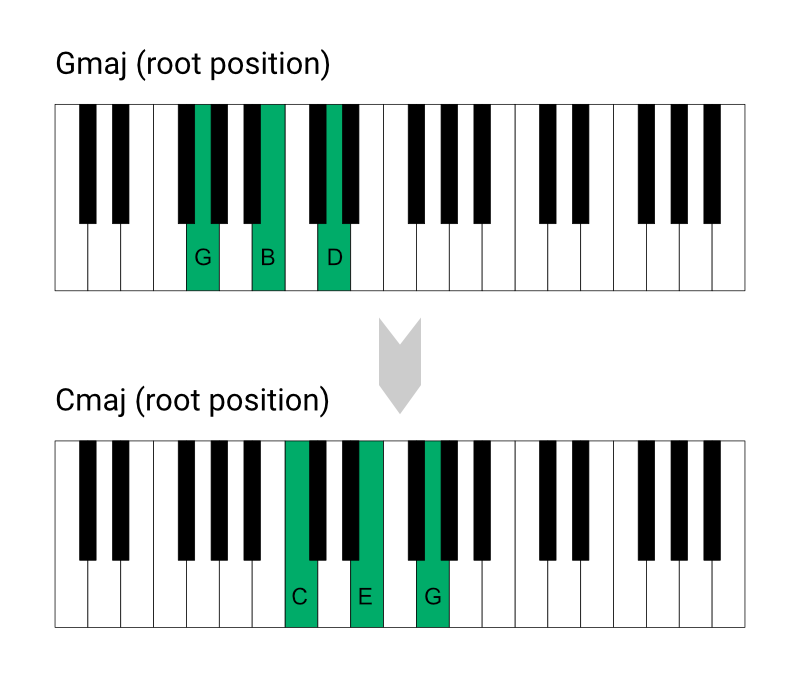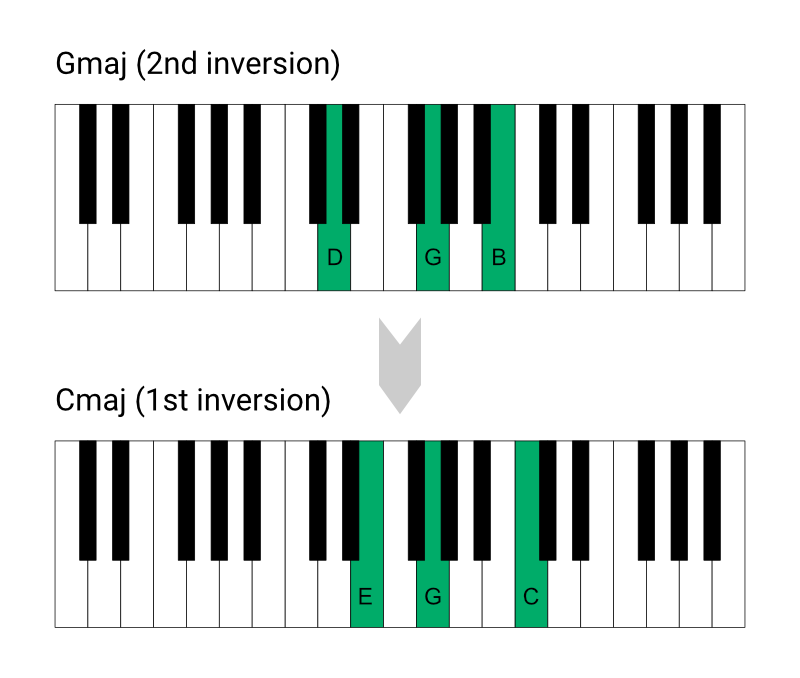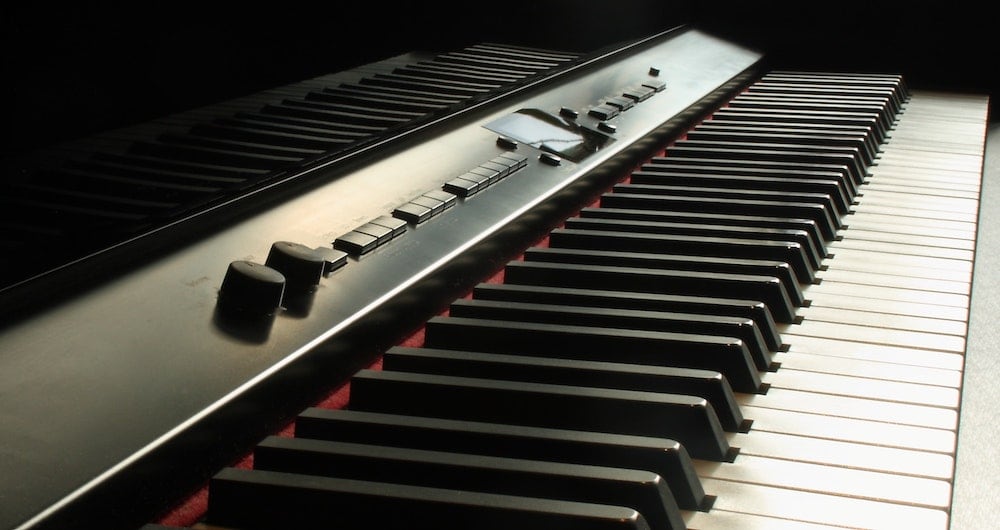7 Ways to Make Your Chords More Interesting (tips for piano beginners)
Probably all of us face moments when we reach a plateau in our playing. Those are times when it’s a good idea to seek out some inspiration to overcome the rut. If you’re bored of playing the same chords over and over again, wondering how to make your chords sound more interesting, you’ve arrived in the right place.
In this post, you’re going to learn my favorite ways to make piano chords sound better, fuller, jazzier – simply more interesting!
1. Rhythmic patterns/variations
One of the easiest ways to make piano chords sound better is by using different rhythmic patterns. The great thing about this approach is that even if you are a complete beginner, you’ll likely be able to come up with simple rhythmic patterns, such as shown in the video below.
There are many ways you can create different rhythmic patterns.
For example, by:
- Alternating notes of the chords in your right hand,
- Alternating notes of the chords in your right hand with different accents in your left hand (and vice versa),
- Changing the rhythm of the whole chords in your right/left hand,
- Changing the rhythm of the whole chords in your right hand with accents in the left hand,
- Playing different accents with both hands at the same time,
- Etc.
I hope you’ve got an idea of the variety of options that you can get with this approach. With literally thousands of different patterns that you can create, your possibilities are basically limitless.
2. Chord Inversions
Another great way to make your chords more interesting is by using chord inversions. As fancy as the term may sound, inversions are merely different ways you can arrange the notes of a particular chord.
Based on the number of notes in a particular chord, we can determine the number of inversions it has. For example, a C major triad has two inversions. It is a three-note chord consisting of notes C-E-G. This basic form with the note C in the bottom is called the root position.
Another way how we can play C major triad is by rearranging the notes to E-G-C, which is called the first inversion or to G-C-E, which is called the second inversion. As you can see, in order to determine the number of inversions of a chord, you take the number of notes the chord consists of and subtract the root position.
As it is with any new technique or piece of knowledge we learn, the purpose of it is to make better music. Although we could randomly use inversions to add variety to our playing, it won’t mean that the song we’re working on will automatically sound better.
One of my favorite ways to use chord inversions is to use them as a tool for creating smooth voice leading. Are you wondering, what do I mean by voice leading? Think of it as a way to move from one chord to the next with the least amount of changes between the intervals of the chord you are moving towards.
For example, let’s say we have a G major triad moving on to C major triad. We could play those chords in either their root position (example 1.) or as a G major second inversion moving on to C major first inversion (example 2.), as shown in a diagram below.
Example 1.

Example 2.

As you can hear, by using inversions, you can create more seamless transitions between chords. Both approaches have distinctly different qualities, and it’s not necessarily about one being better over the other, they are just different. Whether you decide to choose chords in a root position or their inversions, should depend on the song or the style in which you are playing.
3. Incorporating melody
Melody is one of the most important parts of any musical piece or song. Without melody, we are dealing with a chord progressions, that could become anything. Even if you are just starting to learn how to play piano, chances are every single piece you have learned so far had a melody in it, so why not use its power in improvised music?
Wondering how to use melodies to spice up your playing? Beyond the fact you can play the melody of a song, you can also create your own melodies or melodies derived from the original melody. One such example can be countermelodies, which are secondary melodies played as a counterpoint to the primary melody.
As a beginner, you may have a hard time creating your own melodies, so it’s important to listen to a wide range of musicians and musical genres to expand your musical vocabulary, but also to find out what appeals to you from the musical standpoint.
It is important to remember that if you are playing with a singer, they will take care of the melody. Therefore it is important to respect their musical space, so you don’t get in the way of their artistic expression.
On the other hand, there are many places within a song where you can support the music with your melodies (e.g., during the intro, bridge, or the end of the song).
4. Grace notes & passing notes
Grace notes are extra notes added as an embellishment, and while they are not essential to the harmony or the melody, they can be a great way to add some spice to your playing.
Passing notes are another excellent alternative to add more melodic/harmonic interest to your playing. I personally like to use them often as a way to develop melody of the song. By adding notes that are not a part of the melody, we can create a nice transition between the notes of the melody.
As you can tell, both types of notes described above are quite similar, but there are some differences. A grace note is generally one-note (played ever so slightly) leading up to the neighboring note, which is a part of the melody or a chord that is essential to the song.
Passing notes can be one or more extra notes that are leading up to the note that is a part of a melody or a chord that is essential to the song. Passing notes also tend to be more emphasized than grace notes.
5. Adding color notes
One of the most common ways to make a chord sound more interesting is by using chord extensions. In jazz circles, they are often referred to as color notes, which well describes their influence on the sound of the chord. In music, extended chords are built by adding one or more extra notes beyond the basic notes of the triadic chord.
The most common chord extensions in music beyond the 7th are the 9th, the 11th, or the 13th.
Depending on the notes you add to your chord, it will impact the quality/color of the resulting sound.
While the theory behind chord extensions is not overly difficult to understand, figuring out which chord extensions work with which chord in a particular chord progression can be more complicated.
What I would recommend is to choose a simple chord progression in a key you are comfortable with and then try to experiment with different extensions of the chords. In this process, your best guide will be your ear, which will tell you what sounds good and what doesn’t.
6. Intervals – the lower, the wider
Most of the previous tips are primarily related to the right hand, but this one is especially helpful for your left hand. The rule is simple: the lower you go on the keyboard, the wider you want to have your intervals spread apart.
This simple rule will give your left hand greater clarity compared to the sound of standard major triad played as 1-3-5 chord (in its root position). This rule is especially helpful for chords and intervals that are going below C2, where things are starting to sound really muddy.
7. Drop two & open voicings
Open chord voicings are a great way to turn simple chords into something much more exciting and beautiful. As the name suggests, these types of voicings are a great way to give your chords more of an open sound.
With its subtle quality, they have many uses in music, but my favorite is to use them as a vehicle to make my melodies stand out.
For example, if you want to create open voicing from the major triad, take the middle note (the major 3rd) of your chord and play it either an octave higher or lower.
The secret of the open sound lies in the size of the intervals between the notes of the chord. In order to build an open chord, make sure that the intervals between the individual notes of the chord are at least perfect 4th apart. As you may have already noticed, this tip is closely related to the tip nr. 6.
One specific subset of open chords are drop 2 chords.
They are a great way to make your triads (or any chord for that matter) sound more subtle, full of emotion, and the best thing is, they are super simple to create. In order to build drop 2 voicing, take your second-highest note of the chord you are playing and drop it down an octave. That’s it!

Welcome to my blog!
Hi, I’m Kuba! Music, instruments and piano has been a big part of my life for quite some time (actually over 20 years)! I come here and write about what I’ve lerned, gear or anythings else piano related. I hope you will find this site helpful.
Other Articles

Worship piano: the ultimate guide for beginners
If you're anything like me, then you probably consider music to be one of the most amazing gifts from God. As a kid, I wasn't always excited about attending the Sunday service, but I remember that the time of praise and worship was my favorite part of the service, and...

How to learn songs by ear
I was around 13 years old and had been thinking about quitting my piano endeavors because, for the past six years, I was almost exclusively playing classical music, which as a kid I didn't enjoy. As much as my classical training helped me develop my piano technique,...

Best digital piano for church
If you are looking for a digital piano for your church, you might be wondering what are the key factors and features I should consider before the purchase? There are dozens of factors you can take into account, but not all of them are equally important.I've been...
Related Article
5 Most Important Piano Practice Tips
Over the years that I've been playing music, I've realized there is no one fit for all when it comes to the best practice routine. Every single musician is a unique being with a specific personality which translates into the way they are most effective during their...

